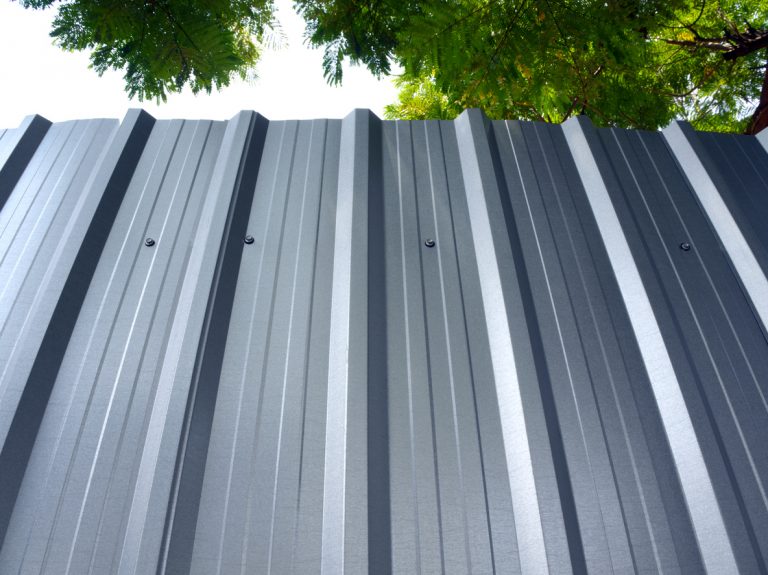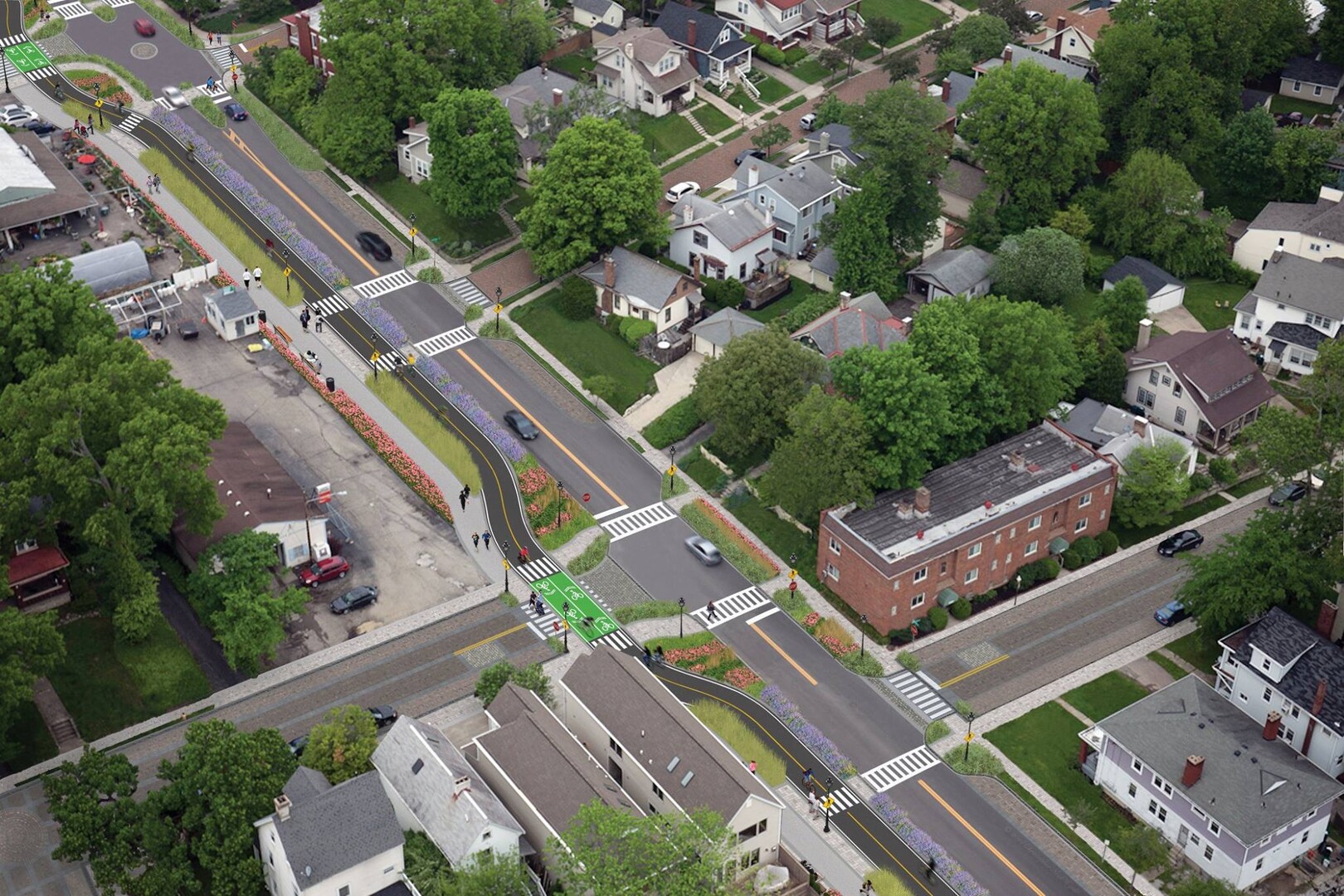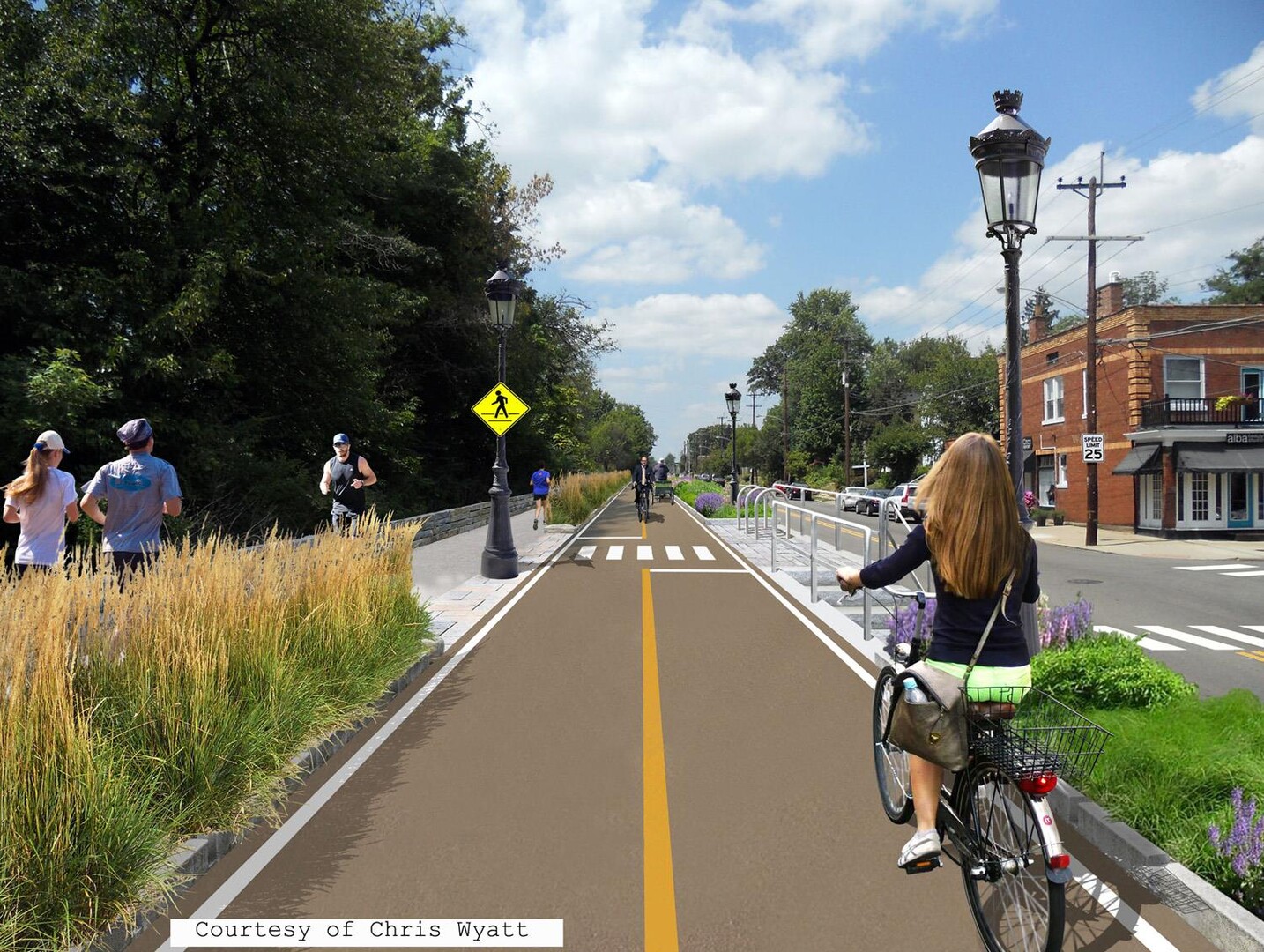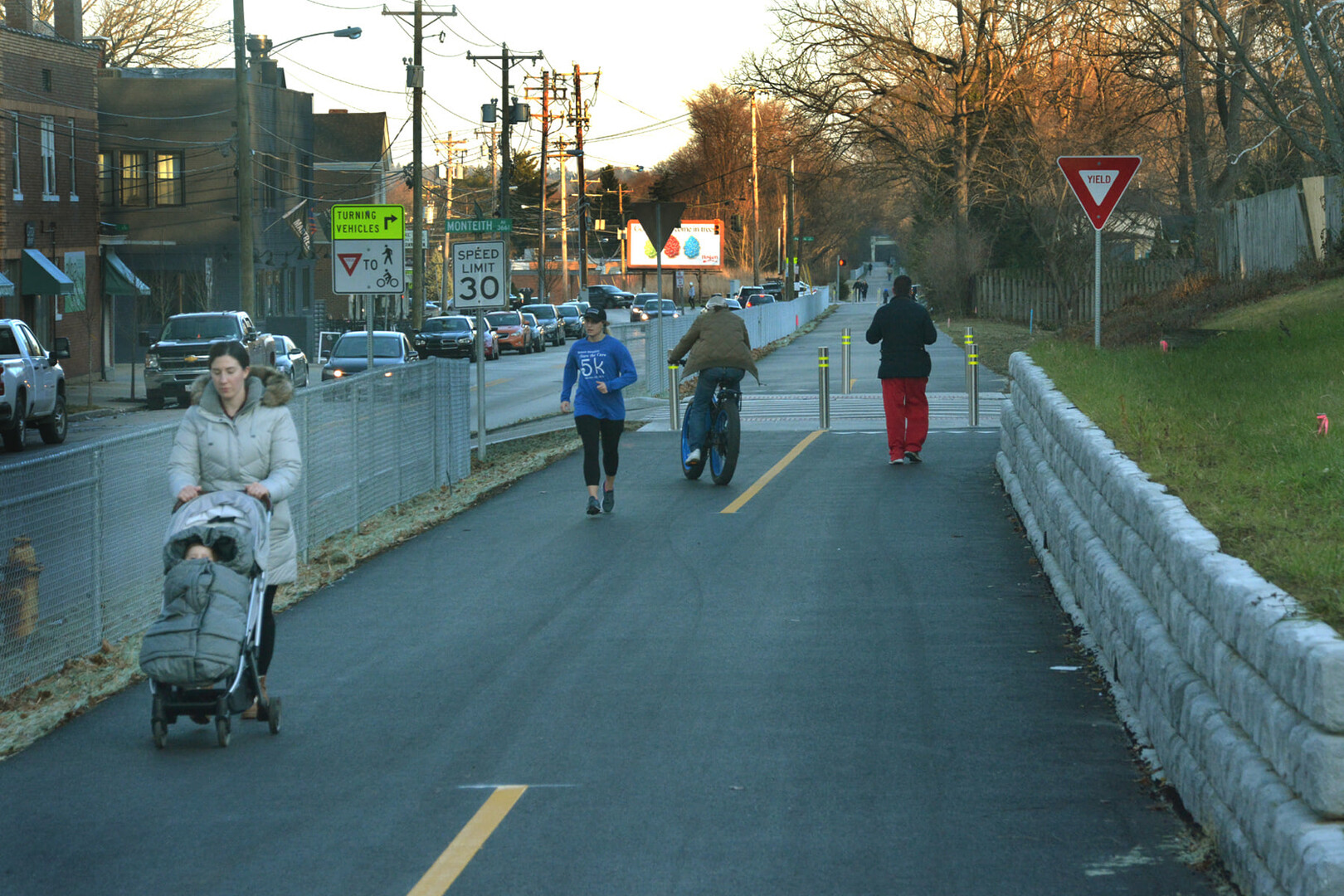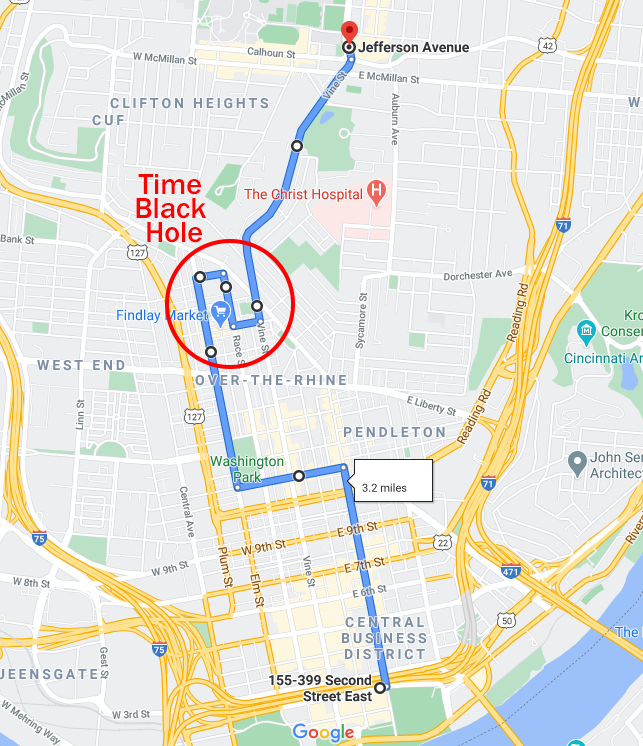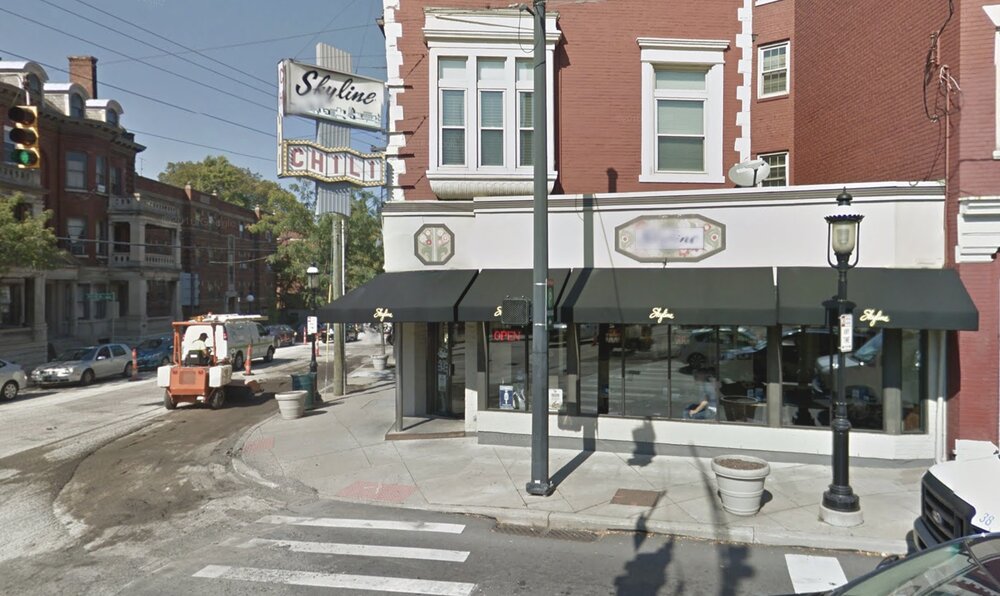Everything posted by jjakucyk
-
Cincinnati: Madisonville: Development and News
Lower Indian Hill? Madeira foothills?
-
Cincinnati: Madisonville: Development and News
Simple lap siding would've looked perfectly fine. Vinyl would be unfortunate but still better than this. Or just stick with the fake tin brick that's already on the front. It doesn't look great, but it's appropriate. Is that even made anymore?
-
Cincinnati: Madisonville: Development and News
The siding makes me sad. It's just corrugated metal roofing installed vertically which makes it look like a self-storage unit. Also the downlights they installed in the soffits don't match each other in color temperature at all.
-
Cincinnati: West End: TQL Stadium
These cell towers aren't even that tall, and there's several high buildings within just a few blocks that have these things called roofs to put them on. Do cities like Chicago have more enlightened regulations to that effect? The cell phone companies don't even take advantage of the few smokestacks we have left here.
-
Cincinnati: Downtown: Court Street Developments and News
Or at least that's the place for some food stalls/carts.
-
Cincinnati: Mt. Auburn: Development and News
Sycamore used to have row houses along its entire east side, all the way to the top of the hill. Many of them lasted through the 1970s but were gone by 1990. That would be a good start. Being an early wealthy neighborhood with numerous transit options (at the time) makes its lack of density puzzling. Like Jake said, estates were subdivided into bungalow districts like you'd find in Pleasant Ridge, Westwood, or Bond Hill. Dorchester, and Highland and Burnet north of Dorchester are prime examples. It smells like an attempt to keep the demographics of the neighborhood more well-to-do through such things as minimum lot sizes, and possibly even minimum house sizes and construction standards. Proto-NIMBYism basically. The houses were juuust new enough and juuust nice enough to avoid redevelopment until it wasn't cool to live in the city anyway. Another factor I think is Christ Hospital. Urban hospitals tend to have a ring of blight around them because they buy the land for future expansion or parking, either tearing down whatever buildings are on it or maintaining them to only the minimal amount necessary. Otherwise speculators hold onto that land hoping the hospital will buy it from them for the same purpose. Investing in development anywhere within a hospital's line of sight is riskier than land banking. Hospitals are also so insular that they can't even seem to spawn housing for their own employees, many of which could benefit significantly from the ability to walk to work. There's a big empty wooded lot directly across Auburn from the main entrance drive that's just sitting there. It would be perfect for a 5 or 6 story apartment block, but Christ Hospital owns it and who knows what (if anything) they plan to do with it.
-
Cincinnati: Downtown: Western & Southern Headquarters
It's certainly possible. However, another way to look at it is that it can have little to no short-term impact, but it doesn't necessarily follow that such will be true in the long term. For instance, Forbes recently published an article about large companies slashing their digital advertising and seeing no impact on sales (link to Slashdot article since there's some good discussion and Forbes is an awful website). Much of the discussion revolves around the fact that big companies/brands like Coca-Cola, McDonald's, Tide, etc. are in it for the long-game of brand recognition, not necessarily specific product marketing. That campaign is years if not generations long. Suspending it for a year or two isn't going to impact much. Stretch that out too long though and the momentum won't be able to carry it on, and building that brand back up can be very difficult. In the same vein, businesses working remotely and without offices may be just fine for now, especially because it's for a (generally) mutually agreed upon reason. Even if there wasn't an expectation of returning to some resemblance of normalcy in the next several months, the lack of true face-time, conferences, trade shows, open houses, happy hours, lunches, basically any networking involving clients, vendors, consultants, colleagues, and even competitors, is going to start taking its toll. Some companies may do just fine with everyone being a hermit crab, but I think others will find that they're falling out of the loop, and clients aren't going to tolerate Zoom meetings forever.
-
Cincinnati: Demolition Watch
jjakucyk replied to buildingcincinnati's post in a topic in Architecture, Environmental, and PreservationIt looks more like a site plan for a hotel, especially that main building with the corner entry and drop-off.
-
Norwood: Development and News
Remember the renderings that showed brick pavers, decorative street lamps, rain gardens, and separate walking and cycling paths? Compare that to what we're actually getting.
-
Norwood: Development and News
No no, the Wasson Way folks consider it a "mostly a non-bike paved trail."
-
Cincinnati Streetcar / The Connector News
I didn't know we had three-block-long streetcars. Talk about capacity!
-
Cincinnati: Pendleton: Development and News
One could argue that these kingmaker types slow down development by being roadblocks to projects/developers who aren't in bed with them. So with them out of the way things can just happen on their own. At least that would be the hope.
-
Cincinnati: Pendleton: Development and News
It's been incredibly slow from the start, well before the pandemic, but elevated concrete pouring like this is slow no matter what.
-
Cincinnati: Downtown: Convention Center / Hotel
Huh, well would you look at that. Chicago has an extensive chilled water utility in the Loop. I remember reading a big spread in the Chicago Tribune about it sometime in the late 1990s. Apparently the company that operates it now has utility service in several other large cities too. A shame these systems fly so much under the radar, and their websites are useless corporate marketing drivel. Steam systems, very prevalent in NYC and college campuses, are very difficult and expensive to operate and keep working. I think a lot of the district heating plants in Europe either were always hot water, or the older steams systems were converted to hot water. Steam was useful before electric motors and pumps because it would just work its way through the pipes under its own pressure. In fact, I think that many downtown buildings around the turn of the 20th century would use steam (district or from their own boilers) to generate their own electricity (especially for elevators), before electric companies came around. Trouble is that steam requires complicated balancing, drains, traps, and heftier pipes and insulation than hot water. The amount of heat it provides isn't really needed either, certainly not these days. Large downtown buildings rarely need as much heating as cooling, even in winter, so it's not so surprising to see district chilled water take the place of district heating.
-
Cincinnati Streetcar / The Connector News
I don't follow. Those are just fit points to force the route.
-
Cincinnati Streetcar / The Connector News
Are you thinking Vine Street would be a separate route? I suppose whether it's separate or just an extension of the loop it's still going to be confusing since there will be streetcars going in the same direction at Race/Findlay Market that will either continue south or turn and head north up Vine. Regardless, the Elm/Henry/Race/Elder/Vine route is a big time suck going northbound, more so if you have to transfer at Race/Findlay Market. If you're just going from Music Hall to UC that's one thing, but I'm thinking downtown or The Banks to UC and I would find that very frustrating.
-
Cincinnati Streetcar / The Connector News
That's basically what the phase 2 plan already is. The problem, as I mentioned earlier, is that to go up Vine you have to take Elm all the way up to Henry, double back onto Race, where they then have a layover of indeterminate time, turn on Elder, then finally turn up Vine. That's so indirect and slow it'll really turn people off without serious prioritization, which is no guarantee.
-
Cincinnati: West End: Development and News
Easily 2x the asking price to renovate, so it's already over $500K all-in, and only for half the building. If the basement flat can be legally rented out then that can certainly help, but the asking price makes it much harder.
-
Cincinnati Streetcar / The Connector News
That's something I advocated for years ago (I think it was lost in the great UO server crash). The current route can be functional as it is with simple signal prioritization and a few tweaks here and there. What can't be fixed however is the awful way it's set up to connect with a Vine Street extension up the hill. With layover time at the MOF and the turnout to Vine at Elder it could easily take 10 minutes to get from Elm/Findlay Market to Vine and McMicken, all after a frustrating four-block detour. If the route was two-way on Vine, it'd be there already. Coming back down the hill to Findlay on the other hand works fine as it is. If Findlay Street was the top end of the current loop, instead of Henry, and all connections could be made to Vine via Findlay in both directions that'd be much simpler, but Findlay is such a car sewer already that'd be a tough sell.
-
Cincinnati's Best Blogs
The late 2000s and early 2010s was also when a lot of people were out of work, so they had more time for blogs (whether writing, reading, or commenting). Some of the decline is self-fulfilling though, which I find unfortunate. Of course engagement is going to decline if you stop producing content, but that should only matter if you have real financial stake in the whole thing.
-
Norwood: Development and News
Probably yes, I don't think SORTA has any say on this track.
-
Norwood: Development and News
-
Norwood: Development and News
The main railroad overpass at I-71 is wide enough for three tracks, but only a tiny bit of that extra space is clipped by the switch for the yard tracks to the east. The old 1850s tunnel and a ramp up to that bridge would allow for a much more direct connection to Oakley Station at the old Cast-Fab (RIP) site.
-
Cincinnati: Clifton: Development and News
That's impressive attention to detail. From the traffic signal color and span wires, storm drains, planter, garbage can, and even that parking sign. The buildings on the left are wrong but look like they were pulled from somewhere else nearby. I'm a big fan of the series pre-season-10, and consider everything past that to be hot garbage, but credit where credit's due.
-
UrbanOhio Feature Changes
Dismissing the ad blocker nag popup leaves the page un-scrollable on both Safari for Mac and Firefox for Windows. Refreshing the page fixes it, so it seems like some of the popup's underlying code isn't being flushed by just dismissing it.





